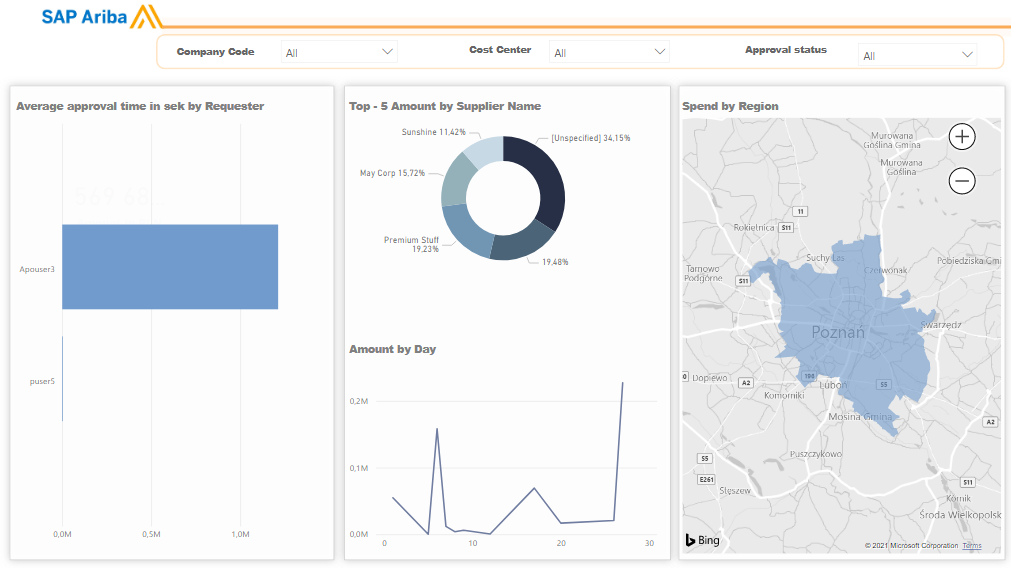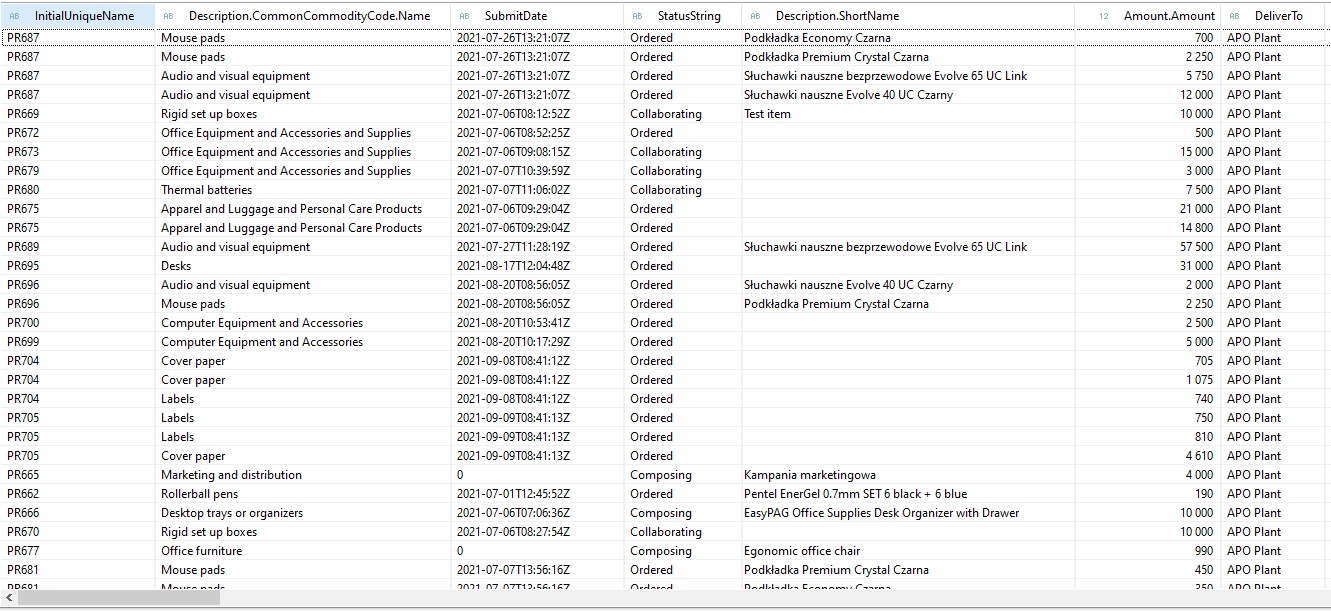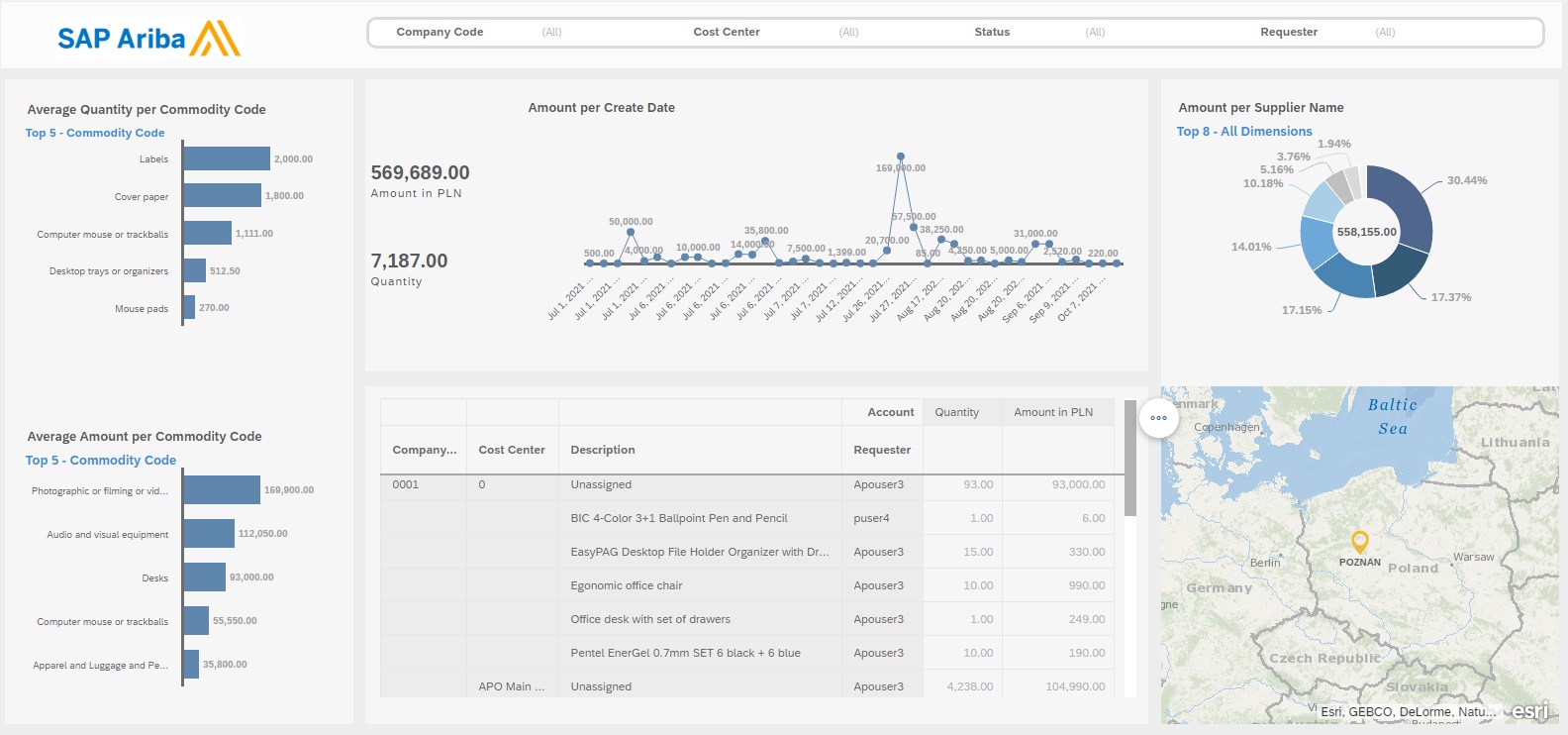Connecting SAP Ariba with Microsoft Power BI for advanced analytics & reporting

Rafał Charzewski
Business Intelligence Developer

Justyna Kaczmarek
Business Intelligence Consultant
- 28th October 2021
- Knowledge base
- 3 min

SAP Ariba is a procurement and supply chain management solution used worldwide by many companies from different industries. The system has a built-in feature to create reports and analyses based on the data available in the system, but there is often a need to carry out a more detailed and complex analysis process by enhancing the procurement platform with external data sources. To take full advantage of data from SAP Ariba, use the available APIs that allow benefiting from insights gained from Business Intelligence tools such as Microsoft Power BI or SAP Analytics Cloud.
Integrating SAP Ariba with a reporting tool
The starting point is to collect the necessary information on the SAP Ariba APIs Portal, where you will find a detailed overview of the SAP Ariba APIs. Then, you have to log on to the right Data Center and point to your Realm.
The tool that enables acquiring data directly from the API is Microsoft Power BI. Microsoft’s solution can use a Python script as a data source, which allows to perform Request POST (needed to get Access Token) and GET directly in our code. The data acquired from SAP Ariba needs to be converted from a JSON file to a Data Frame so that Power BI can load it and prepare it for further analysis. At this point, Power BI does not support 100% Python data source. The only possible option to refresh our data is to use Personal Gateway to set up a schedule. Below you can see a sample report that presents data from SAP Ariba.


If our reporting tool can’t execute Python or any other script, we can implement an ETL process that loads data from the API into the database of our choice – we picked SAP HANA. To run the script, we used Jupyter Notebook and a script we created earlier that was applied to Power BI. You should also import the hdbcli library that will help connect to the database and load the acquired records from SAP Ariba.

Combining SAP Ariba with SAP Analytics Cloud
The data that will be loaded into the new table can be presented in any tool that supports connection to the database of our choice. In this case, we used SAP Analytics Cloud to carry out the analysis.

Integrating data with SAP Ariba, first of all, allows enriching the analysis with other data sources, such as information from ERP systems and additional insights about suppliers or products, so that we can gather all essential data about a given order in one place. Therefore, we can save a lot of time that would otherwise be spent on collecting information from each system separately. It will undoubtedly have a positive impact on the process of making critical decisions and immediate identification of issues.
Do you want to integrate SAP Ariba with a reporting tool?
- On 28/10/2021







0 Comments